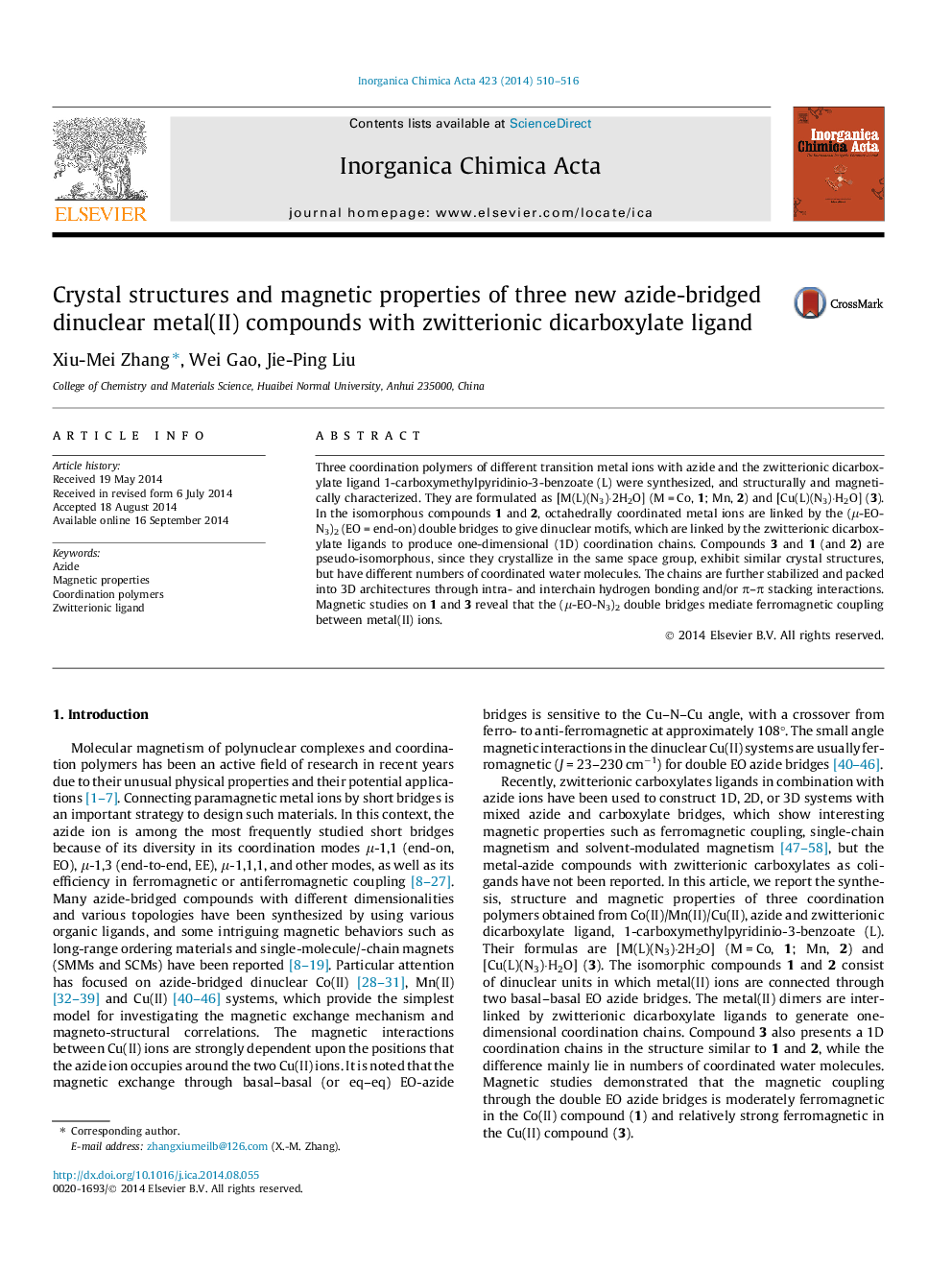| Article ID | Journal | Published Year | Pages | File Type |
|---|---|---|---|---|
| 1309497 | Inorganica Chimica Acta | 2014 | 7 Pages |
•Three 1D coordination polymers with zwitterionic dicarboxylate ligand.•Dinuclear motifs with the (μ-EO-N3)2 (EO = end-on) double bridges.•Ferromagnetic interaction in the Co(II) and Cu(II) compounds.
Three coordination polymers of different transition metal ions with azide and the zwitterionic dicarboxylate ligand 1-carboxymethylpyridinio-3-benzoate (L) were synthesized, and structurally and magnetically characterized. They are formulated as [M(L)(N3)·2H2O] (M = Co, 1; Mn, 2) and [Cu(L)(N3)·H2O] (3). In the isomorphous compounds 1 and 2, octahedrally coordinated metal ions are linked by the (μ-EO-N3)2 (EO = end-on) double bridges to give dinuclear motifs, which are linked by the zwitterionic dicarboxylate ligands to produce one-dimensional (1D) coordination chains. Compounds 3 and 1 (and 2) are pseudo-isomorphous, since they crystallize in the same space group, exhibit similar crystal structures, but have different numbers of coordinated water molecules. The chains are further stabilized and packed into 3D architectures through intra- and interchain hydrogen bonding and/or π–π stacking interactions. Magnetic studies on 1 and 3 reveal that the (μ-EO-N3)2 double bridges mediate ferromagnetic coupling between metal(II) ions.
Graphical abstractAzide and zwitterionic dicarboxylate as co-ligands lead to three 1D coordination polymers in which dinuclear motifs with the (μ-EO-N3)2 (EO = end-on) double bridges are linked by dicarboxylate ligand. The double bridges transmit ferromagnetic coupling in the Co(II) and Cu(II) compounds.Figure optionsDownload full-size imageDownload as PowerPoint slide
